With the right tools, food preparation is safer, faster and easier. Finding the kitchen knives that suit your specific needs is challenging because there is a wide variety of knives to choose from on the market today. If you are not aware, you may end up buying specialist knives you will hardly ever use. Naming conventions for knives tend to complicate matters even more. Different cutting tools are assigned multiple names for one style.
Here are seven different types of cooking knives and their uses:
Type #1: Chef knives
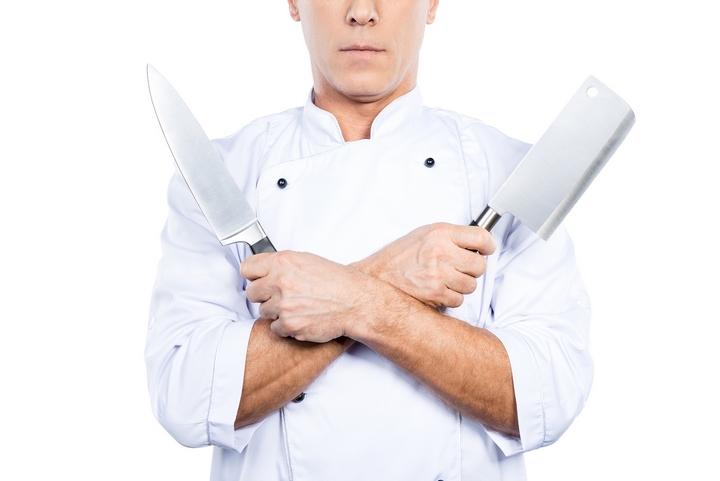
Also known as a cook’s knife, the chef knife features a long, wide blade with a straight edge. The heel is the widest part, tapering to a pointed tip. A chef knife also has a curved blade that allows it to rock back and forth on a chopping board. This makes it perfect for dicing and chopping large amounts of vegetables at once.
The broad heel means it’s capable of handling more pressure when performing heavy-duty chopping. It is useful for cutting harder or thicker foods like parsnips, onions or tomatoes. A chef knife is the most versatile in any kitchen. These types of cooking knives are ideal for everyday mincing and dicing tasks.
Type #2: Paring knives
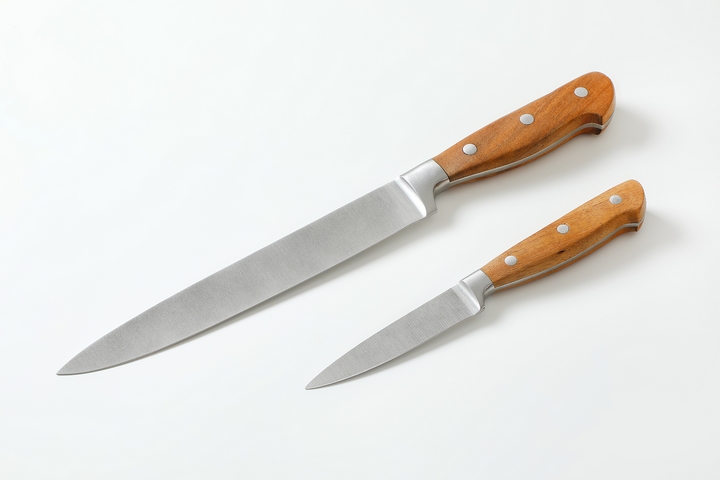
A paring knife features a short, slim, even-sized blade that’s pointed at the tip. These types of cooking knives are light and, therefore, ideal for delicate tasks. This small but mighty knife is useful for cutting, chopping and slicing vegetables and fruits. It can also be repurposed for a variety of kitchen tasks.
Despite being small, a paring knife makes handling hard foods such as potatoes easy. It does this while maintaining the ability to manoeuvre during delicate tasks. These include removing seeds from vegetables and fruits, trimming and peeling.
Type #3: Bread knives
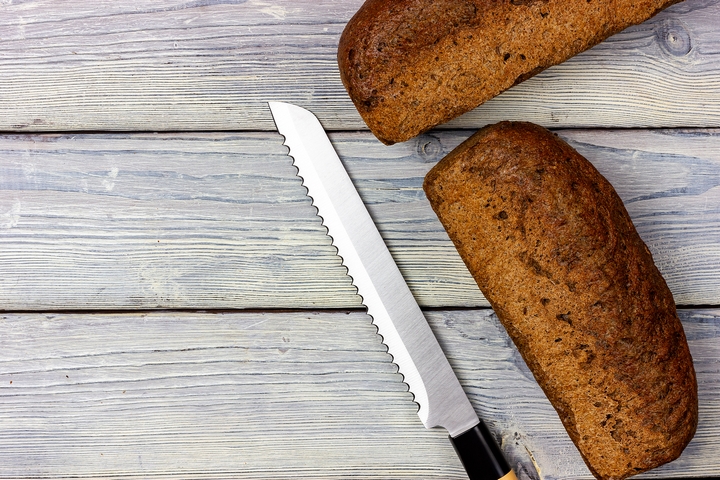
A bread knife comes with a long, evenly sized blade that features a sharp, serrated edge. It is mostly used on softer items. The sharp, serrated edge of the long blade makes it perfect for sawing through different types of bread, including bread rolls, bagels, baguettes, and crusty bread. The grooved edge allows a chef to cut foods with softer textures without negatively affecting their original shape.
You can also use bread knives to slice fluffy, soft-textured cakes since they can slice through them without removing air from the sponge or damaging its overall shape. You can use these types of knives as a cake leveller as well.
Type #4: Utility knives
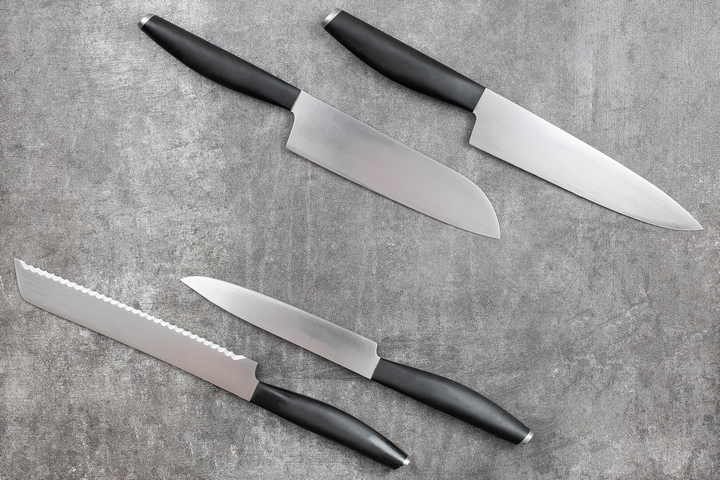
The shape of a utility knife is similar to that of a chef knife, but it is slimmer and smaller. These types of cooking knives commonly feature a sharp tip that tapers to the spine, making it ideal for intricate work.
Utility knives are great for chopping smaller vegetables and foods like shallots. A utility knife shares most of the qualities of a chef knife, the main difference being its size. Where the chef’s knife is too big to get the job done, utility knives are great restaurant supplies to have.
Type #5: Cleaver knives
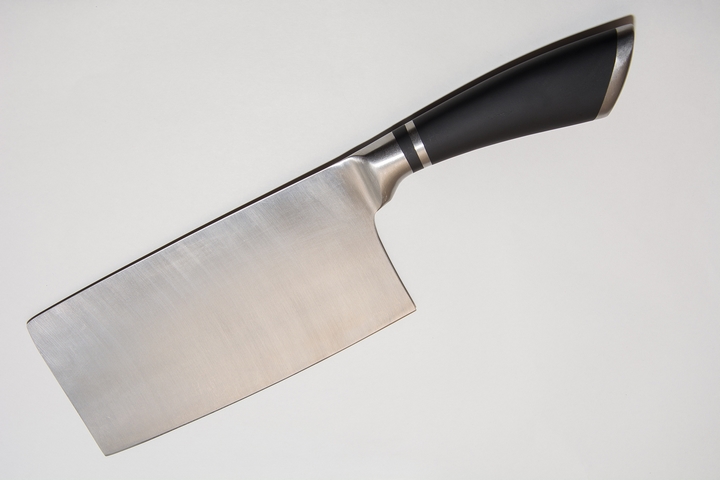
A cleaver, which is also known as a butcher knife, features a flat, rectangular-shaped blade. It’s available in various sizes depending on the intended use. It’s one of the heaviest, broadest knives that sometimes features a hole near the blade’s spine, which means you can hang it when not using it.
Use a cleaver mainly to chop raw meat. It comes in a large, heavy design that allows it to evenly cut through bone. Due to its bulky size, chefs only use it to chop raw meat, not cooked food. The flat, broad and heavy surface is also useful for crushing ginger or garlic cloves against a chopping board.
Type #6: Carving Knives
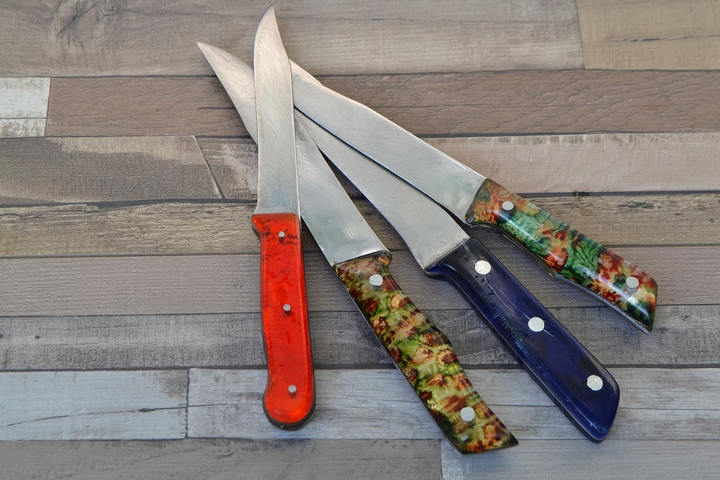
A carving knife features a long, slim blade that tapers to a sharp point. It’s also known as a slicing knife. The narrow width allows it to produce less drag when cutting through foods, producing cleaner and more uniform slices. When serving meats like beef, lamb, pork or poultry, a carving knife produces thin, neat, evenly sized slices.
You can also use these types of cooking knives to slice through large vegetables and fruits such as courgettes or melons, which are tough to cut with broader, smaller knives. With their long, thin blades, they’re ideal for cutting perfect cake slices in a one, smooth cutting motion.
Type #7: Boning Knives
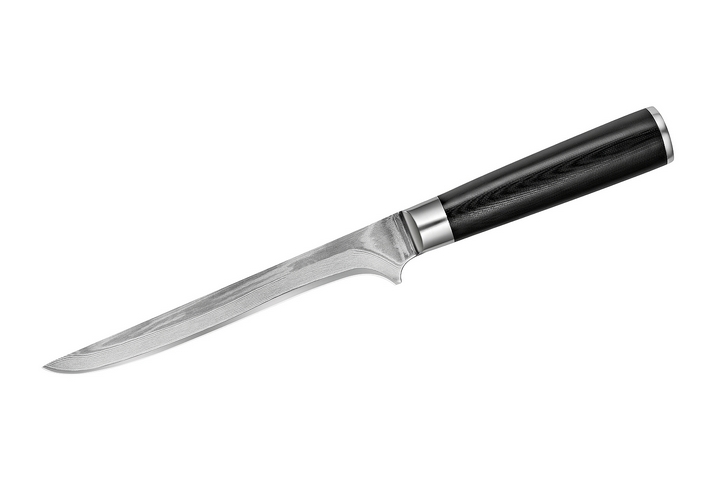
A boning knife features a slim blade with a sharp edge that tapers to a pointed tip. Although it features a rigid design, it is excellent for trimming cartilage and cutting meat bones to create perfect joints or cuts before cooking. The slim blade and pointed tip make it great for cutting around a bone without damaging the surrounding flesh. When deboning beef or pork, you may need a slightly harder knife. For poultry, you will need a flexible blade.
Knives are designed for different purposes. The best cooking knives are task appropriate. Having the right knife for every task enhances efficiency in a restaurant.
